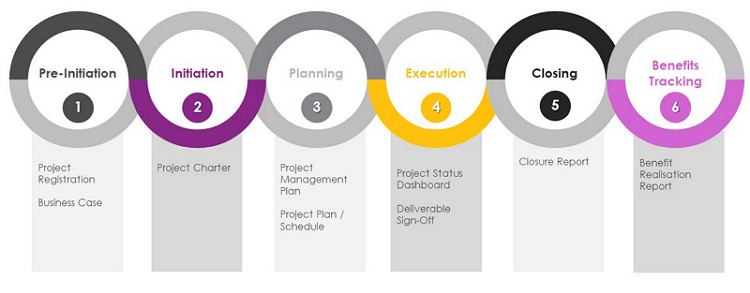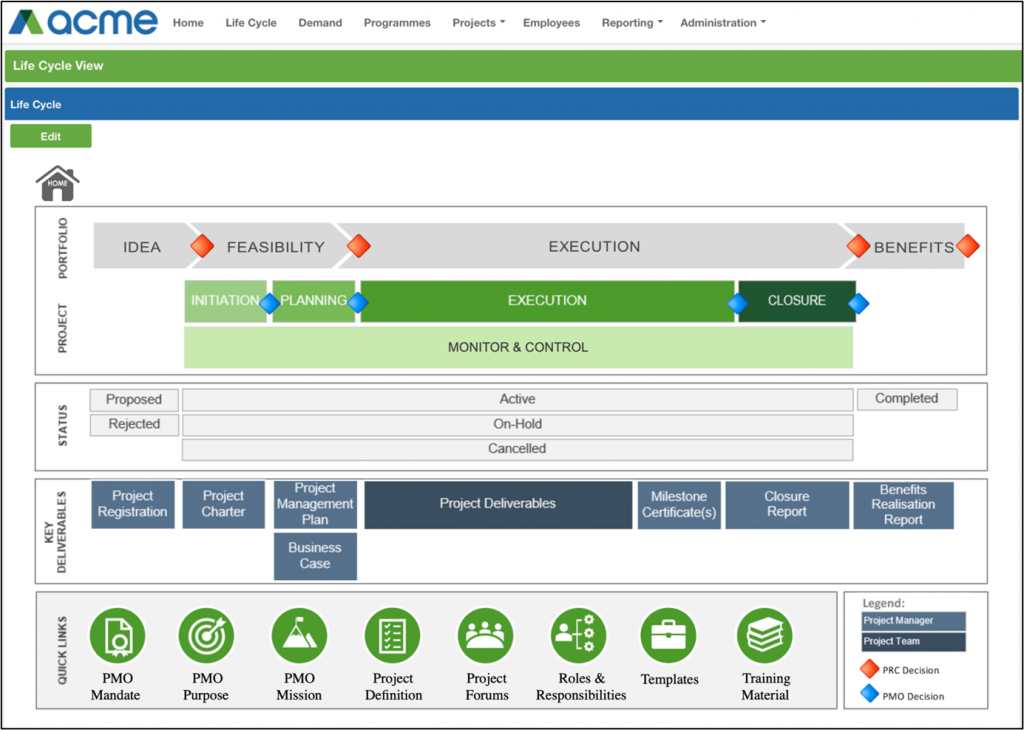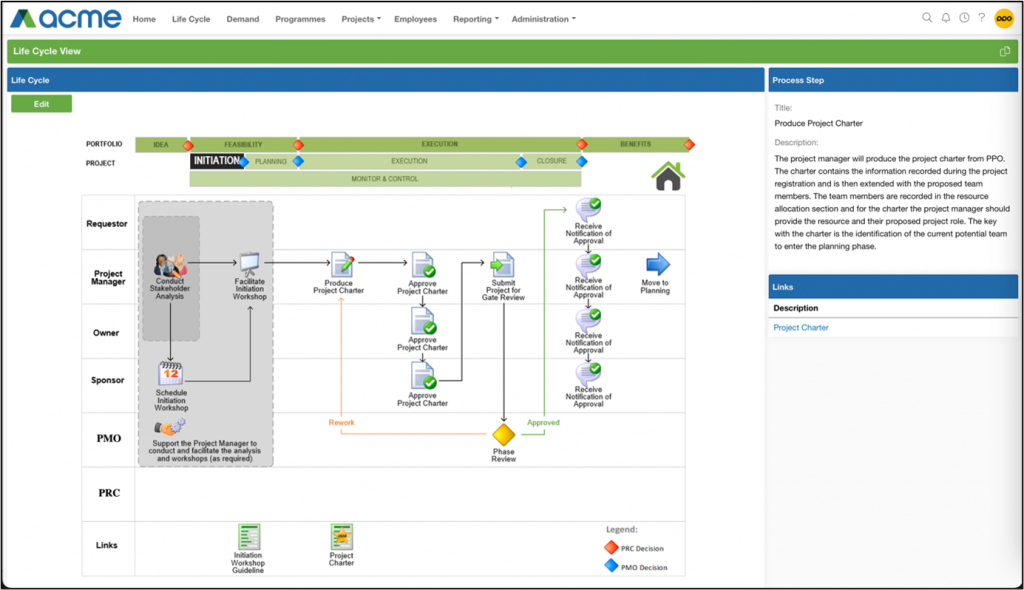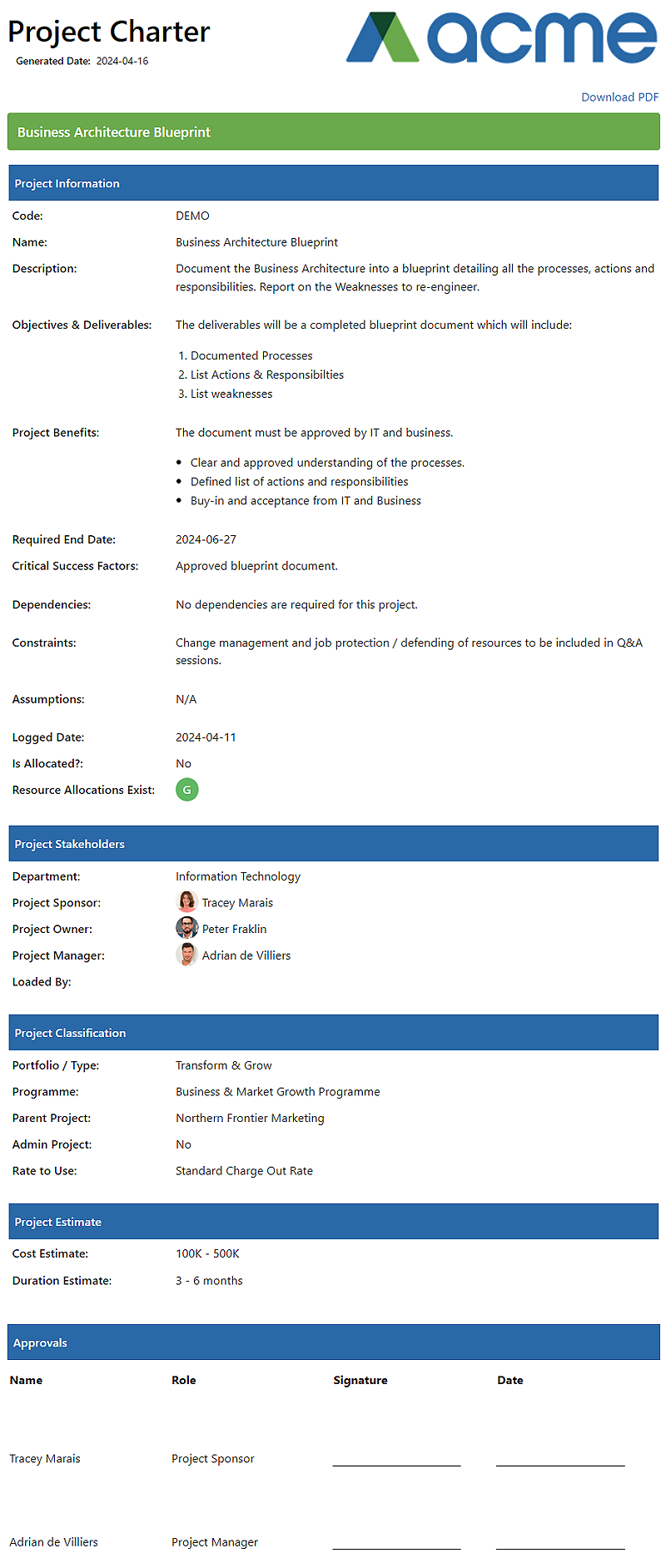Most organisations have adapted some form of project management methodology to ultimately ensure greater project success. Project management methodologies offer several benefits that help streamline processes, enhance productivity, and improve project outcomes. Some of the key advantages include:
- Structured Approach: Methodologies provide a structured framework for managing projects. They offer step-by-step guidance, defining processes, tasks, and roles, which can reduce ambiguity and confusion.
- Improved Efficiency: By following a methodology, teams can optimise workflows, allocate resources effectively, and minimize redundancies, leading to increased efficiency in project execution.
- Risk Management: Methodologies include risk assessment and mitigation strategies. They help identify potential risks early, allowing teams to proactively address them and minimise their impact on the project.
- Clear Communication: These methodologies often establish communication protocols, ensuring everyone involved understands their roles, responsibilities, and the project’s progress. This clarity reduces misunderstandings and enhances collaboration.
- Documentation and Accountability: Methodologies often mandate documentation at various stages, ensuring that project progress, decisions, and changes are recorded. This documentation enhances accountability and serves as a reference for future projects.
We’ve been implementing Project Portfolio Office (PPO) is organisations from small to large, across all sectors and using any number of methodologies for almost 20 years, but what we’ve noticed over the last 5 years is that the number of projects per project manager has increased, to in some cases an almost seemingly unmanageable number and that more and more accidental project managers are being used to execute projects. Typically, these accidental project managers are not certified and experience project management professionals but, in most cases, subject matter experts or business resources that are now being ask to project manage their projects and initiatives using the organisations project management methodology.
While some Project Portfolio Management (PPM) tools automate some of the required project and portfolio status report, when we developed PPO we automated a number of the key project management documents that an organisation would mandate their project managers to complete.

Traditionally the project management methodology would provide a range of Word Templates to the project managers which they would have to complete during the lifecycle of the project.
The problems with using Word based templates are:
- Duplication of Effort: Most of the project information would be required to be added to each document, and thus project managers generally find it a duplication of effort to complete each document.
- Access to the Documents: Trying to find the latest version of the document is a pain, if the organisation doesn’t make use of a document management application or structured PPM tool.
- Data isn’t Searchable: Even if you can find the document you can’t do a quick search or perform any analysis on the content of the documentation as each document is a separate document and the data is stored in the document and not in an organised database.
- History Tracking is Problematic: It’s often impossible to actually see what changed on the document over time, comments and reviews are done, many versions are saved, in most cases with horrible file names and the Word-based templates are impossible to see changes per version and who did them.
- Baseline Changes unclear: During the life of a project key baselines often move, whether these are end dates, budgets, estimated effort, key project resources. Unless you have the time and energy to find each of the documents in the image above and stack them next to each other, it’s almost impossible to see when some of these key baselines changed and more importantly why.
- Lack of Quality Control: We often find that when using Word based templates project managers will simply remove specific sections, omit key information and in some cases even use templates that are not part of the defined organisations methodology. Project offices really approve key project documents, these are typically approved by the project manager, project owner and sponsor, and in most cases these resources don’t apply quality control reviews to the output compared to the template.
- Challenging for Business Resources / Accidental Project Managers: A project management template is very daunting for a non-certified project manager to complete. Any accidental project manager will quickly tell you the stress and anxiety they experienced when presented with a link to the required project document templates that needed to be completed.
- Time consuming to generate: Most project managers will tell you that the further you move in the project the more time consuming each document is to complete. While the inverse should be true, we want more time spent early on in the project when completing the business case and planning, it’s often the closure certificate that takes forever to complete. Just have a quicky look at your portfolio and the number of days each of your projects have been in the last phase (your tool does give you this information, I hope, I know PPO does). You’ll quickly see the dreaded blockage in the funnel of all those project that we just don’t close out, because getting the project closure document completed is so painful. Jokes aside, it is very time consuming manually taking the original project objectives, budgets, timelines, assumptions and risks and the updating them with the final costs spent, time spent, benefits as well as recording that project lessons learnt and trying to track down any open issues or risks that may need to be moved to the operational team on project closure.
For all of these reasons, and others, we’ve developed PPO to allow project managers to simply make use of the methodology defined by the organisation (in our lifecycle section).

PPO’s lifecycle provides a simple and easy step by step guide on each step in the process, and when it comes to completing one of those project documents, the lifecycle provides a clear explanation of what’s required and link to PPO for the user:

The benefit that our clients have found using PPO is that unlike other PPM tools, customised spreadsheet systems or SharePoint portals or fully manual environments PPO provides the user with the ability to generate all the required project documents from PPO, using the information already captured.
Whether these are CAPEX Requests, Business Cases, Project Charters, Project Management Plans (PMPs), Deliverable Sign-Offs or the dreaded Project Closure Report, PPO already contains all the information required to complete these documents.
Project name, description, business objectives, critical success factors and assumptions are entered when the project is initially registered and then updated as the project progresses. During planning the resources required are captured, initial budgets and timelines are recorded, and risks are recorded as identified. As the project progresses through execution the risks are updated as they are managed, lessons are captured as we learn them, project budgets and timelines are adjusted as per the defined methodology.
This makes the creation of the Project Closure Report at the end of the project or the Project Management Plan at the end of planning a very simply exercise. Users run the specific output directly from PPO, review it online and then update and adjust any information, as required.


All of this supports the benefits of using a project management methodology, as listed above, removes a lot of the pains of using manual based templates, saves the organisation time, allows for greater quality, and most importantly allows for a much easier adoption of the chosen project management methodology, especially in today’s times where project managers, typically accidental or business resources, are managing a greater number of projects than ever before.
If you’re keen to see PPO’s digitised project management outputs, simply join one of our free Introduction to PPO webinars or Try PPO today for 30 days today!


